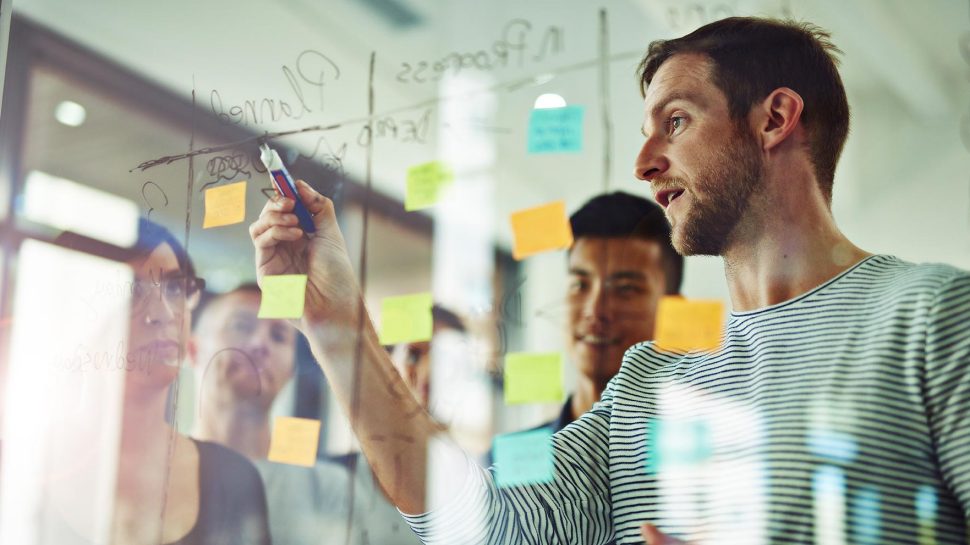Australia Post’s agile approach to digital transformation

If Uber can blindside the taxi industry, we are more than aware this could happen in parcel delivery and other parts of our business. But until 2012, we didn’t have the capability we needed to compete seriously in ‘digital’.
To put that into perspective, around the time Uber officially launched in Australia, we had just started building our digital capability. The impact is helping to transform our business and what we offer to customers: with around 350 people, customers now enjoy new updates and features several times a week compared with once or twice a month just three years ago. More than half our customer traffic is now via a mobile device, and we know digital is now the channel of choice because we’ve seen such a significant increase in self-service.
I guess you could say we’re one of the biggest digital agencies you’ve never heard of.
And we are not the only government owned entity on this journey. When I presented at NextGen in February, I was thrilled to see a real shift in the way government understands the requirements of a digital economy – there’s a growing maturity in design thinking, and on putting the customer experience first.
For us, it has been a four year investment in people, culture and technology. So, if you’re ready to start building some serious digital capabilities in your organisation, here are a few things we’ve learned along the way.
1. Play to your strengths, but get ready to change
We never saw digital as a threat, but an opportunity to capitalise on our considerable strengths: our undeniable physical presence (around 4,400 post offices) and our position of trust in the community. What we had to change, though, was the way we worked – and we were prepared to learn from our Digital team’s experience to drive that new model across the organisation.
That meant moving to small multi-functional teams that focus on specific problems or opportunities, and supporting those teams to let them work fast, iterate quickly and be lean and adaptive.
2. Invest in teams and tooling
By investing in tools and automation we can now make changes at speed. This took two or three years to get up and running but we’re now seeing the impact on turnaround for our customers.
For example, we’ve shifted all our platforms into the cloud and have automated this process as much as possible, so the developer and teams can work autonomously and take their own changes all the way through to production without depending on other teams and shared infrastructure.
Here’s what that means. If you map out the process to change a bit of code and get through all the stages of testing, environment drops and out into production, it used to take us a minimum of 50 days. We now have the ability to do that in less than an hour – so we can prototype and experiment in ways we couldn’t do before.
We can also deploy changes as beta versions, and get customer feedback. We did this last year with a new parcel tracking feature – we would assemble feedback at the start of the week and by Friday we could put out changes and the cycle would begin again. We had over 65,000 visits to the beta version, received over 400 points of feedback and evolved the solution to something that was a much better fit for our customers. True co-creation with users.
Some of the best solutions are developed today this way – rather than through a single drop.
3. Create new funding models and processes
To create an environment where agile teams can prosper, you need different governance processes and funding models.
Around 95 per cent of our digital work is now capacity funded, which allows us to innovate in this way. We used to work with a traditional project model but we found that often made us lose sight of the customer outcome we were seeking.
By shifting to a model where we fund teams over a period of time, they can completely focus on that customer opportunity and evolve solutions over time.
That can be quite powerful – as we saw when we worked with a Queensland based organisation to solve the challenge of keeping up with customer address changes. We realised quickly that this is a common issue for many organisations. Our team worked closely with different organisations and users to iterate through many ideas, concepts and prototypes. We now have a white label solution that closely matches what users and organisations want, and we expect to continue learning and evolving the solution after launch.
4. Culture is critical
If you want a digital capability to thrive, prosper, and sustain itself, it all comes down to culture – moving away from traditional hierarchical models to more team based collaborative models. You need more people who are passionate about learning, evolving capability, efficiency and lean working – who are prepared to re-imagine new solutions to old problems.
An example of nurturing this culture and supporting an innovation mindset are our Hackathons, which we call Hackdayz. Our Apple watch app came out of one of our Hackdayz events. The team prototyped an Apple watch app during one of our hackathons and went on to build a great parcel tracking app that was available the day the Apple watch went live.
So when a parcel enters our network for you, you get a subtle tap on your wrist and a message to let you know it’s on its way. When it arrives, if you send it to a parcel locker, you can pull up a QR code on the watch to open the locker. And yes, you can do all this on your smartphone as well.
5. We need more inter-government collaboration
To really push Australia into the digital age, one government department or provider can’t work alone. We need to bring together different capabilities to meet the needs of Australians and businesses, and take an open approach to the solutions and platforms we create– and it was heartening to get a real sense of openness at NextGen.
At NextGen, the Digital Transformation Office (DTO) shared the work they are doing to help other government agencies think about customer experience in every aspect of government service delivery. We also heard some great examples of other agencies taking a customer first approach such as the Australian Tax Office (ATO) which is making customer calls easier through the use of voice biometrics. The ATO spoke positively about the potential for this service to be opened up for customers to use this capability in interactions with other agencies.
We can also learn a lot from the experience in other nations. When Uuno Vallner, a former eGovernment Director from Estonia, spoke about their identity solution I realised just how much friction that has taken out of their economy. With one ID card (and no Drivers Licence) they now have 30 per cent of voting completed online, two-third of census surveys done over the internet, and 95 per cent of their medication bought with a digital prescription.
I believe the Australian government is on the brink of a true digital transformation – and if we can work together, and learn from different experiences and success stories, we can solve many of the challenges government agencies are dealing with. At the same time, we can also provide a truly frictionless (and perhaps even enjoyable) experience for businesses and all Australians, making everyday life just that much easier.
